Cioppino (Fisherman’s Stew)
This post may contain affiliate links. Read my full disclosure policy.
Cioppino, a hearty Italian-American stew made with a medley of fresh seafood in a rich tomato and wine broth, perfectly captures the taste of the sea.
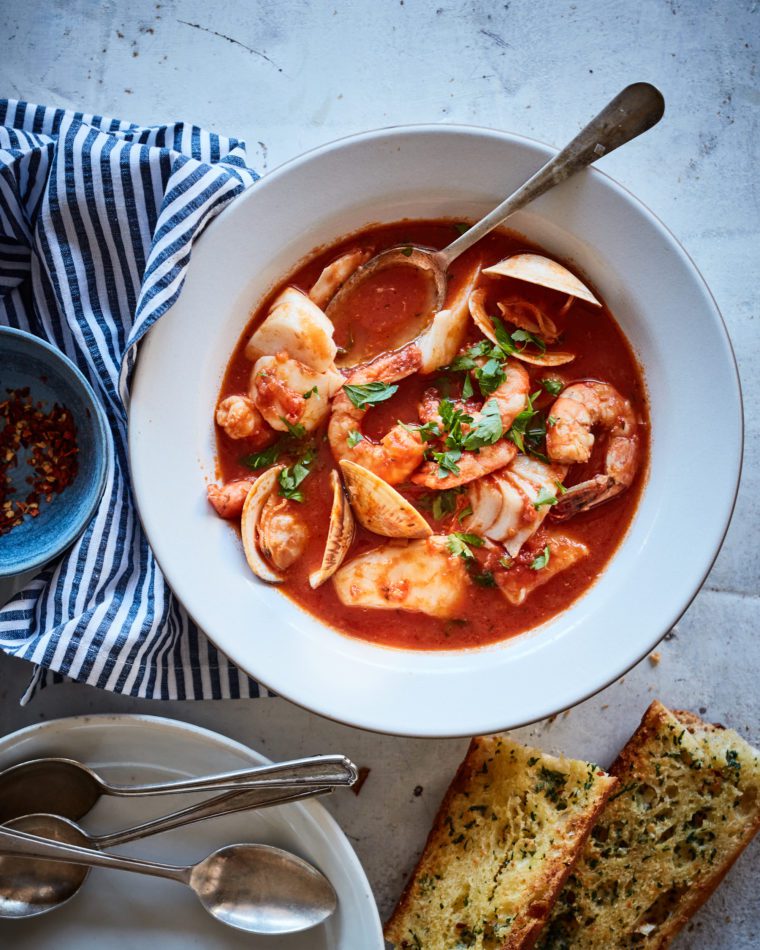
Photo by Johnny Miller, Clarkson Potter 2021
Brimming with fresh seafood in a tomato and wine broth that tastes like the sea, cioppino (pronounced chuh-pee-noh) is a rustic Italian-American fish stew. Its origins can be traced back to Italian immigrant fishermen in San Francisco, but my personal favorite version can be found at Portofino, a picturesque bayside restaurant in Longboat Key, Florida. Every year, my family gathers at Portofino over the holidays to enjoy the cioppino, and the chef was kind enough to share his recipe with me.
To make the recipe more accessible for home cooks, I have modified it by using fewer types of seafood (though crab, lobster, or mussels would all make wonderful additions). To fully enjoy this wonderful stew, serve it with garlic bread, focaccia, or a baguette to soak up the flavorful broth—and be sure to set out an extra bowl for shells and plenty of napkins.
Table of Contents
“I’m a culinary trained chef of 25 years working on private yachts now…All I can say is wow!!!! The broth is spot on.”
What You’ll Need To Make Cioppino
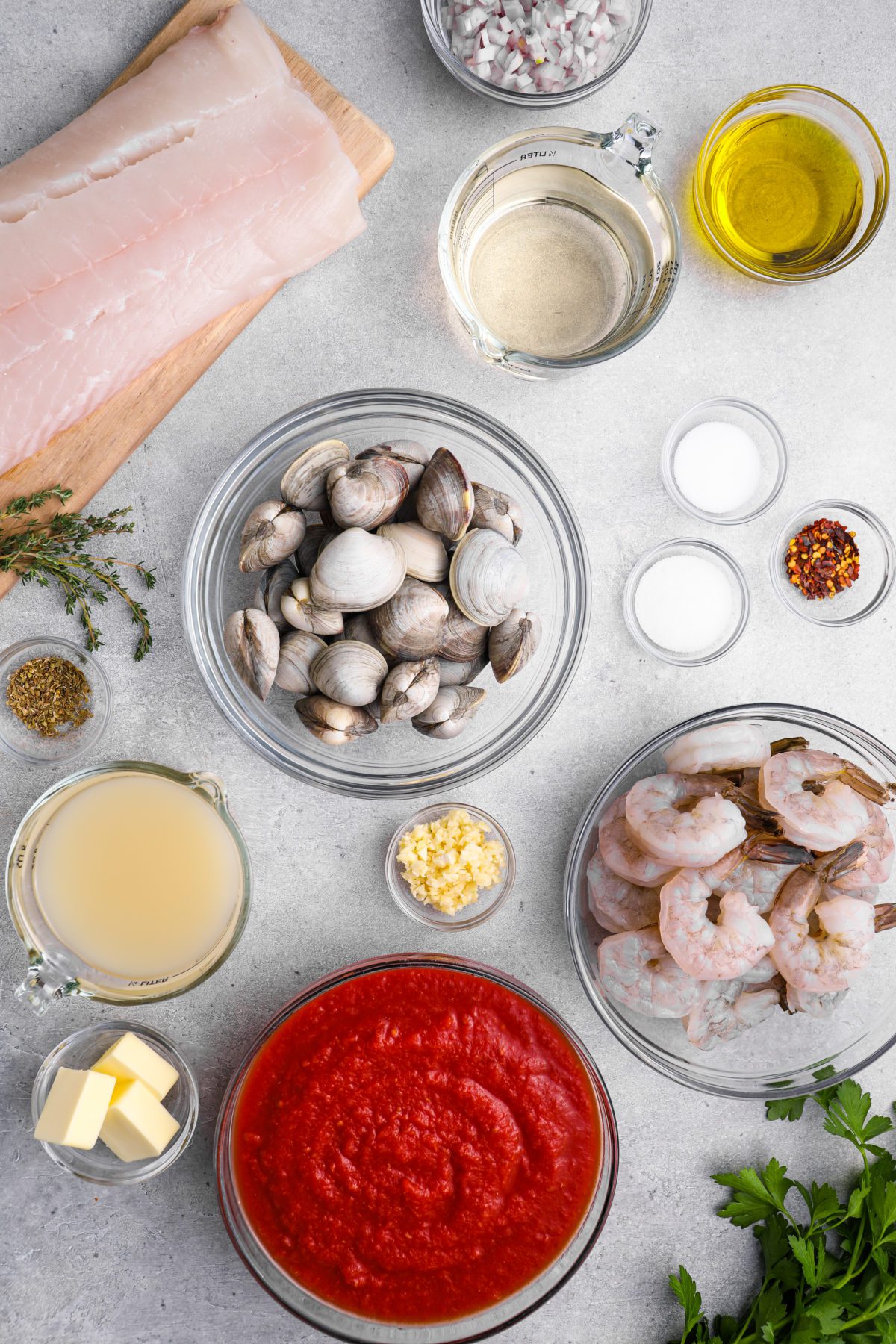
- Shallots and Garlic: These aromatics form the flavor foundation for the stew.
- White Wine: Adds acidity and brightness, complementing the seafood.
- Canned Crushed Tomatoes: Gives the cioppino its rich tangy flavor and vibrant color.
- Clam Juice: Lends a briny depth that makes cioppino truly taste like the sea.
- Crushed Red Pepper Flakes, Oregano, Thyme: This combination of spices and herbs adds warmth, earthiness, and a hint of heat.
- Firm-fleshed Fish Fillets: Chunks of halibut, cod, salmon, or snapper absorb the broth’s savory broth and contribute their own delicate taste to the stew.
- Butter: Added at the end of the cooking process to give the cioppino and a velvety finish and round out the acidity of the wine and tomatoes.
- Littleneck Clams: A traditional cioppino ingredient, the clams open up during cooking to release their sweet, briny juices into the broth. (See the FAQs for how to store and clean them.)
- Shrimp: With their slightly sweet, meaty texture, shrimp cook quickly and absorb the surrounding flavors.
- Jump to the printable recipe for precise measurements
Step-by-Step Instructions
To cook the stew, heat 1/4 cup of the oil over medium heat. Add the shallots and cook until soft and translucent, about 5 minutes. Add the garlic and for 1 minute more. Do not brown.
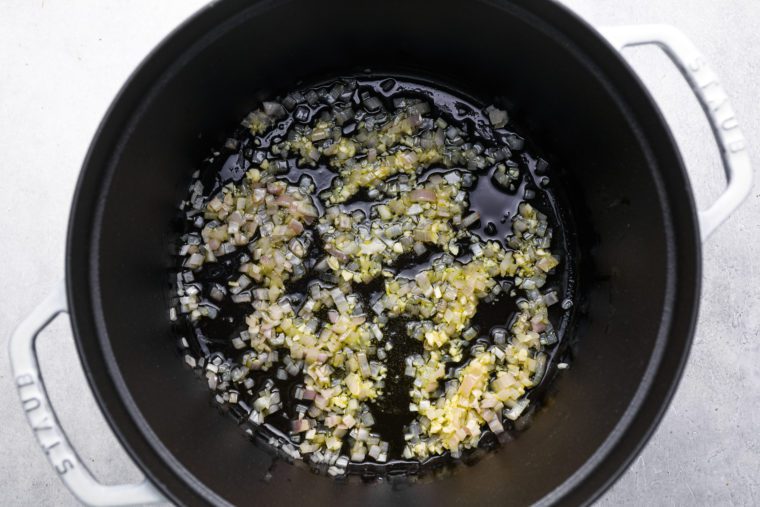
Add the wine and increase the heat to high. Boil until the wine is reduced by about half, 3 to 4 minutes.
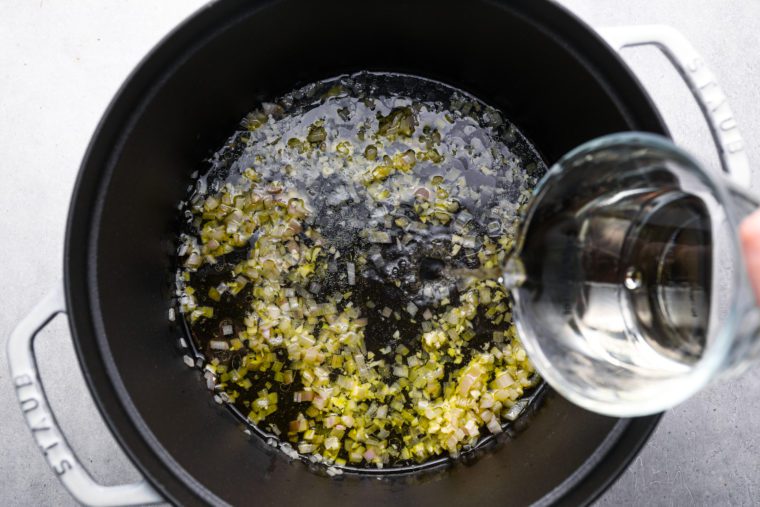
Add the crushed tomatoes, clam juice, sugar, 1 teaspoon of the salt, red pepper flakes, oregano, thyme sprigs, and 1 cup of water. Bring to a boil; reduce the heat and simmer, covered, for 25 minutes.
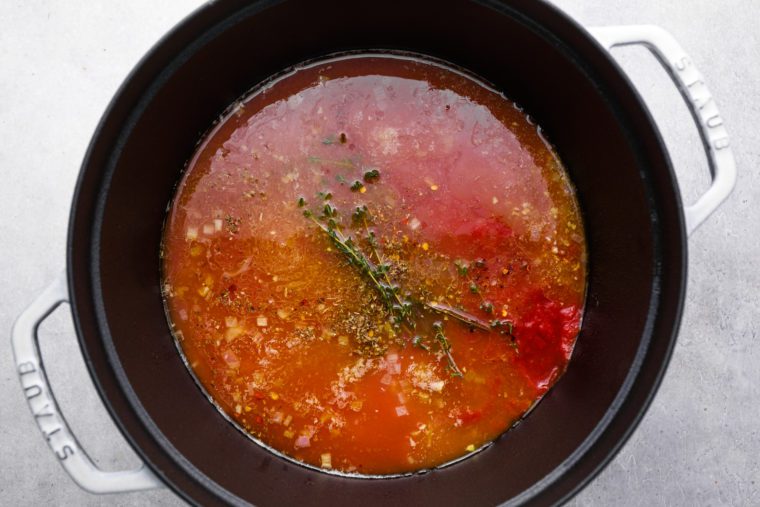
Meanwhile, while the stew is simmering, toss the fish with the remaining 2 tablespoons oil and remaining 3/4 teaspoon salt. Arrange the fish on the prepared baking sheet.
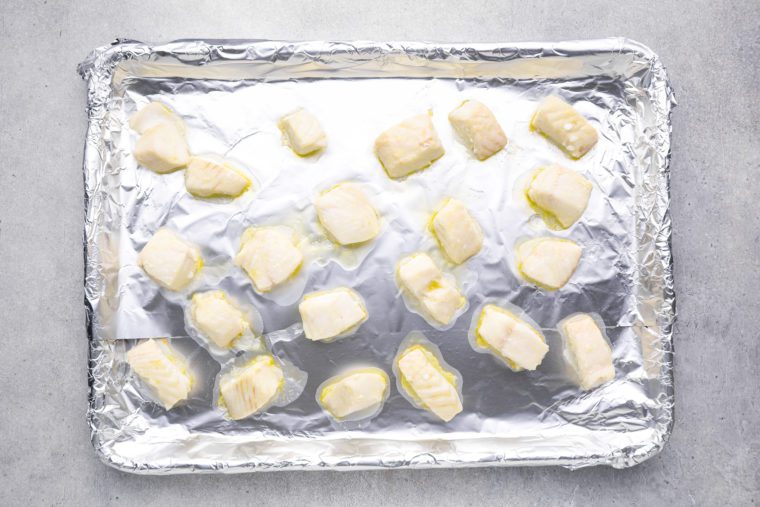
Bake for about 10 minutes at 400°F, or until just cooked through. Cover and keep warm until ready to serve. (Note: most cioppino recipes call for the fish to be simmered in the broth but I prefer to bake it separately so that it doesn’t fall apart or overcook.)
When the stew is done simmering, remove and discard the thyme sprigs and stir in the butter.
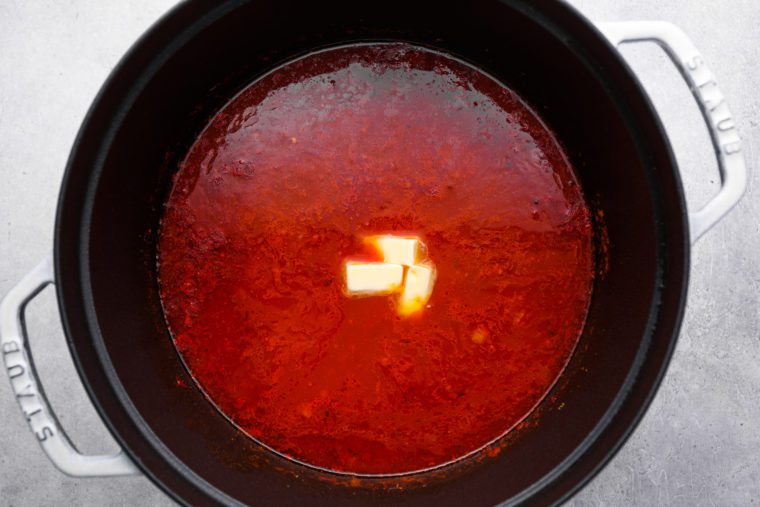
Add the clams and bring the stew back to a simmer.
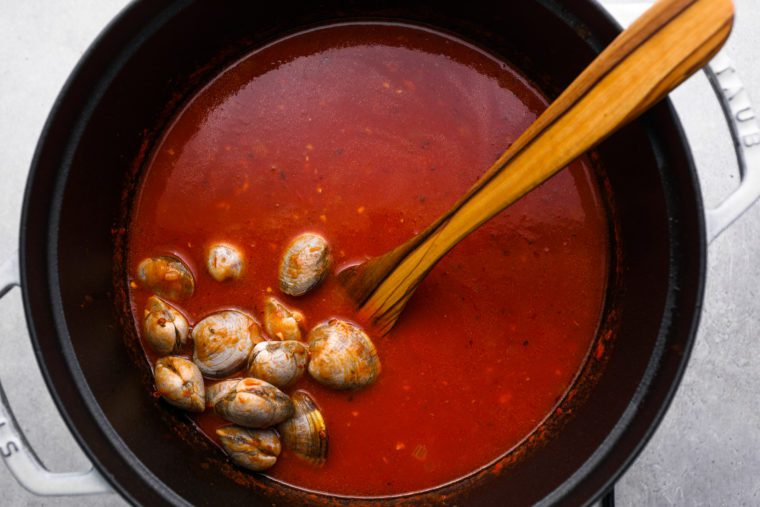
Cover and cook for about 6 minutes, until the clams have mostly opened. Gently stir in the shrimp and bring the stew back to a simmer.
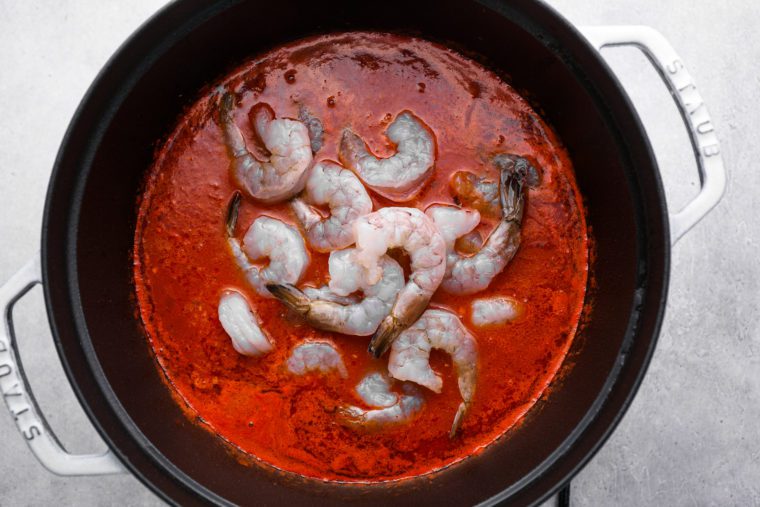
Cover and cook until the shrimp are just cooked through and the clams are completely opened, about 5 minutes. Discard any unopened clams. Add the chopped thyme, then taste the stew and adjust seasoning, if necessary.
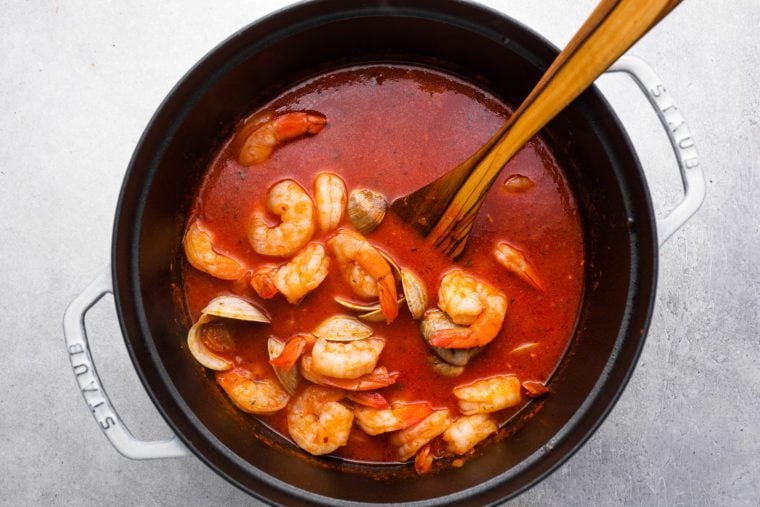
Divide the warm fish into serving bowls. Ladle the stew over top, dividing the clams and shrimp evenly amongst the bowls. Garnish with parsley, if using, and serve with garlic bread, focaccia, or a baguette for sopping up the broth.
Frequently Asked Questions
First, make sure all of the shells are tightly closed. If any clams are open, gently tap them against the countertop; if they are alive, they will close their shells. Discard any clams that do not close their shells or that have cracked or chipped shells.
Before cooking the stew, place the clams in a bowl and cover them with cool tap water. Let them sit for 20 minutes to an hour. During this time, the clams will expel sand from inside their shells. When you’re ready to cook, lift each clam from the water and rinse it, scrubbing if necessary, to get rid of any grit from the surface. (Note that most supermarkets sell farm-raised clams, which are already quite clean, so you may not find a lot of grit or sand.)
Clams are usually sold in a mesh bag because they are alive and need to breathe. If your fishmonger places them in a plastic bag, remove them from the bag immediately when you get home from the supermarket and place them in a bowl covered with a damp cloth in the refrigerator.
You can make the cioppino, without the seafood, up to 2 days ahead of time. Store it in the refrigerator, covered. When ready to serve, bake the fish and bring the stew to a simmer before adding the seafood.

Video Tutorial
You May Also Like
Cioppino (Fisherman's Stew)
Cioppino, a hearty Italian-American stew made with a medley of fresh seafood in a rich tomato and wine broth, perfectly captures the taste of the sea.
Ingredients
- ¼ cup + 2 tablespoons extra-virgin olive oil, divided
- ⅔ cup finely chopped shallots, from about 3 shallots
- 3 cloves garlic, minced
- 1 cup white wine
- 1 (28 oz) can crushed tomatoes
- 2 (8 oz) bottles clam juice
- 2 teaspoons sugar
- 1¾ teaspoons salt, divided
- ½ teaspoon crushed red pepper flakes
- ½ teaspoon dried oregano
- 7 sprigs fresh thyme, plus 1 teaspoon fresh chopped thyme
- 1½ pounds firm-fleshed fish fillets, such as halibut, cod, salmon, snapper, etc., cut into 2-inch pieces
- 3 tablespoons unsalted butter
- 1½ pounds (about 18) littleneck clams, scrubbed (see note)
- 1½ pounds extra large raw shrimp, peeled and deveined
- Fresh chopped Italian parsley, for garnish (optional)
Instructions
- Preheat the oven to 400°F and set an oven rack in the middle position. Line a baking sheet with aluminum foil and set aside.
- In a large pot, heat ¼ cup of the oil over medium heat. Add the shallots and cook, stirring frequently, until soft and translucent, about 5 minutes. Add the garlic and cook, stirring constantly, for 1 minute more. Do not brown.
- Add the wine and increase the heat to high. Boil until the wine is reduced by about half, 3 to 4 minutes.
- Add the crushed tomatoes, clam juice, sugar, 1 teaspoon of the salt, red pepper flakes, oregano, thyme sprigs, and 1 cup of water. Bring to a boil; reduce the heat and simmer, covered, for 25 minutes.
- Meanwhile, while the stew is simmering, toss the fish with the remaining 2 tablespoons oil and remaining ¾ teaspoon salt. Arrange the fish on the prepared baking sheet and bake for about 10 minutes, or until just cooked through. Cover and keep warm until ready to serve.
- When the stew is done simmering, remove and discard the thyme sprigs and stir in the butter. Add the clams and bring the stew back to a simmer. Cover and cook for about 6 minutes, until the clams have mostly opened. Gently stir in the shrimp and bring the stew back to a simmer; cover and cook until the shrimp are just cooked through and the clams are completely opened, about 5 minutes. Discard any unopened clams. Add the chopped thyme, then taste the stew and adjust seasoning, if necessary.
- Divide the warm fish into serving bowls. Ladle the stew over top, dividing the clams and shrimp evenly amongst the bowls. Garnish with parsley, if using, and serve with garlic bread, focaccia, or a baguette for sopping up the broth. Set out a second bowl for shells and plenty of napkins.
- Make Ahead: The stew, without seafood, can be made 2 days ahead and stored in the refrigerator, covered. When ready to serve, bake the fish and bring the stew to a simmer before adding the seafood.
- Note: Littleneck clams are readily available at most supermarkets and are usually sold in a mesh bag because they are alive and need to breathe. If your fishmonger places them in a plastic bag, remove them from the bag immediately when you get home from the supermarket and place them in a bowl covered with a damp cloth in the refrigerator. To prepare the clams for cooking, first, check that they are alive by making sure all of the shells are tightly closed. If any clams are open, gently tap them against the countertop; if they are alive, they will close their shells. Discard any clams that do not close their shells or that have cracked or chipped shells. To clean, place all of the clams in a bowl and cover them with cool tap water. Let the clams sit for 20 minutes to an hour. During this time, the clams will expel sand from inside their shells. When you’re ready to cook, lift each clam from the water and rinse it, scrubbing if necessary, to get rid of any grit from the surface. (Note that most supermarkets sell farm-raised clams, which are already quite clean, so you may not find a lot of grit or sand.)
Pair with
Nutrition Information
Powered by ![]()
- Per serving (6 servings)
- Calories: 575
- Fat: 23 g
- Saturated fat: 6 g
- Carbohydrates: 20 g
- Sugar: 9 g
- Fiber: 4 g
- Protein: 69 g
- Sodium: 1,650 mg
- Cholesterol: 287 mg
This website is written and produced for informational purposes only. I am not a certified nutritionist and the nutritional data on this site has not been evaluated or approved by a nutritionist or the Food and Drug Administration. Nutritional information is offered as a courtesy and should not be construed as a guarantee. The data is calculated through an online nutritional calculator, Edamam.com. Although I do my best to provide accurate nutritional information, these figures should be considered estimates only. Varying factors such as product types or brands purchased, natural fluctuations in fresh produce, and the way ingredients are processed change the effective nutritional information in any given recipe. Furthermore, different online calculators provide different results depending on their own nutrition fact sources and algorithms. To obtain the most accurate nutritional information in a given recipe, you should calculate the nutritional information with the actual ingredients used in your recipe, using your preferred nutrition calculator.

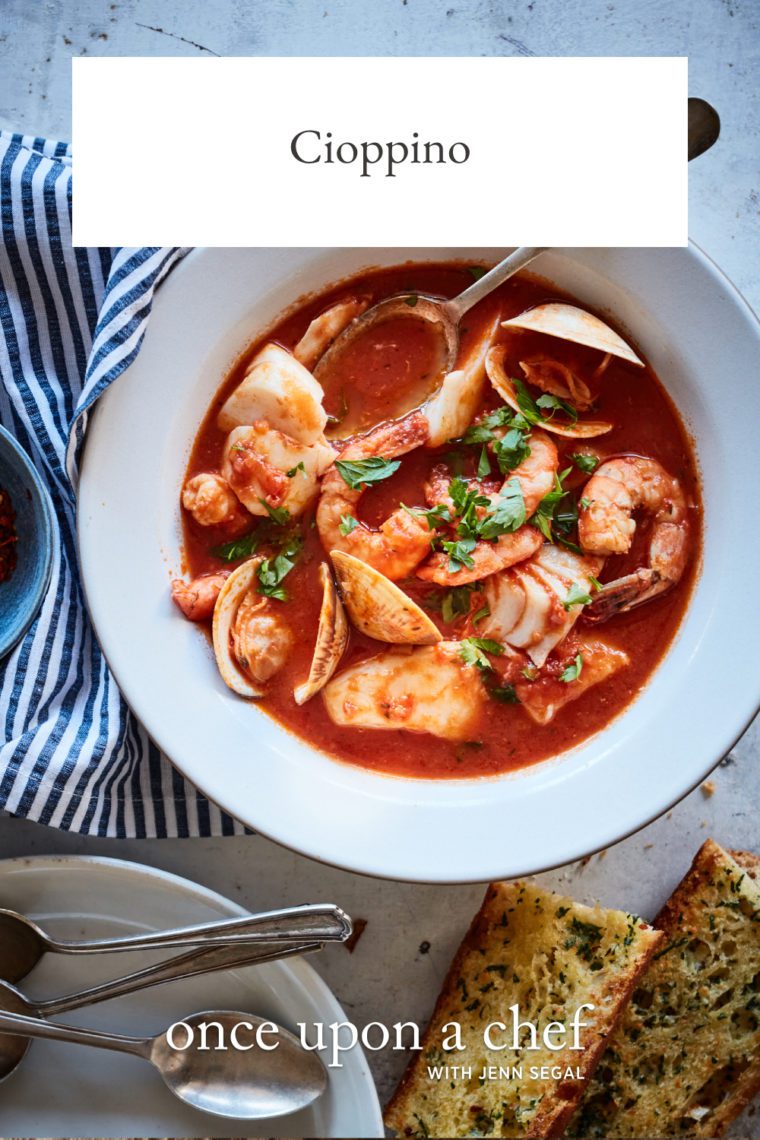
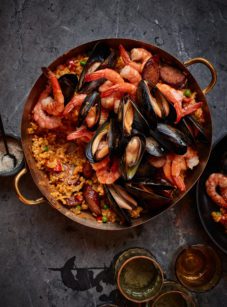

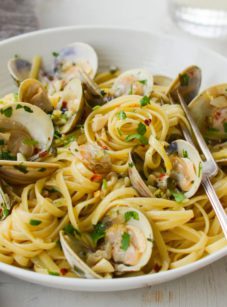
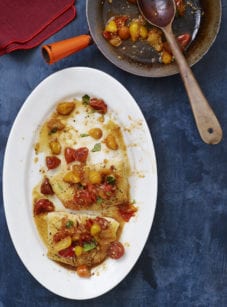

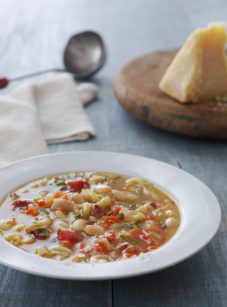
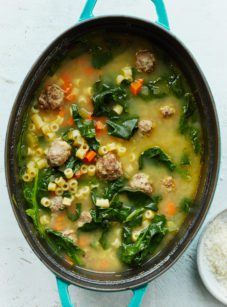
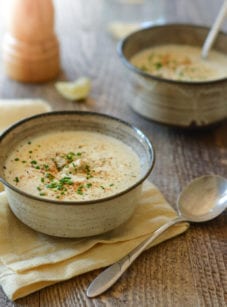
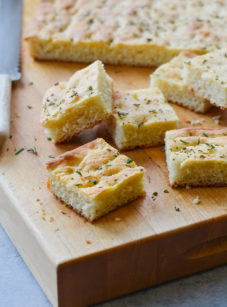
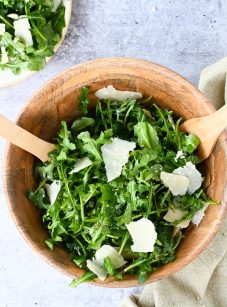
Can I get away without using butter for this recipe? Any suggestions for alternatives or is it just a must?
Totally fine to leave it out, Abbey — it just rounds out the broth. Or you could use olive oil instead. Enjoy!
Hi Jenn
I first had this dish at a neighbours along with the Big Italian Salad – it was my introduction to your cooking and website. Since then you have become my goto for most meals and I can honestly say that in the last 8 months everything I have made from your site is fabulous. Tonight I made this with mussels and homemade grainy bread and it was amazing. I love your cookbook and look forward to continuing to try all your recipes. Thanks for all you do – hopefully you will be in the Vancouver area someday so I can say thanks in person. Cheers. Colleen
So happy you’re enjoying the recipes, Colleen! 😊
Great soup!
I’m from San Francisco, and we made this all the time from fish & shellfish that we purchased at Fisherman’s Wharf.
Most of the time, we make it from whatever firm white-fleshed fish is available at a good price, shrimp which is always on-hand in the freezer. Have to buy fresh clams–you absolutely need fresh clams!
I frequently use 1/2 of a 28-oz can of tomatoes for other recipes, and freeze the left over portion. It is these frozen remnants that get used for this stew. I typically use vermouth for the wine, as we mostly drink reds, and there is always vermouth on hand. And I typically have onions but frequently am out of shallots.
This soup always turns out great & is a guest favorite. We like it with a fresh baguette, but have freshly made garlic-herb butter for our guests, and they can toast it on the grill in no time.
Again….A Fabulous recipe….Thanks Jen!
What is the best method for adding lobster? And what quantity? Thank you
Hi Eileen, I’d cook the lobster first and add it towards the end to give it just enough time to warm through. Hope that helps and I’d love to know how it turns out!
Another fantastic recipe! Thank you!
My husband suggested we make it as a pasta dish. Worked out very well. We thickened the sauce by adding half a can of tomato paste.
Thanks Jenn. I’ll try that. I forgot to rate the recipe. Definitely 5 stars!!
Hi Jenn
I made this recipe and the flavor was excellent. My husband loved it but likes pasta with everything and I was wondering how I could thicken the broth a little to go over pasta. Any suggestions. would be appreciated. By the way, I absolutely love your cookbook and have tried some of the recipes with great success. Congratulations!!
Hi Maria, So happy you like the recipe and the cookbook! To make the broth thicker, I’d use only half of the clam juice. Hope that helps!
Love!
Made it exactly as written except added fennel at the same time as the shallots.
I liked having the fennel’s texture mixed up in there.
Question…the clams were out keast favorite..a tad rubbery I’m assuming from over cooking. Do you think adding them to the shellfish additions last would fix that? Thanks!
Yep, that will help Kim. Glad you enjoyed!
Made this for the first time for guests. It was DELICIOUS. Followed recipe exactly as written, with cod, little neck clams, shrimp, and a few seared scallops. Side of garlic bread and everyone loved this dinner on a cold Sunday night. Thank you!
Hi Jen!
Back to using your incredible recipes! Have already made the broth in preparation for a Valentine’s dinner for my parents tomorrow night. I picked up some fresh mussels, shrimp and scallops. All will be frozen by tomorrow. This may be silly, but what is your recommendation for preparing the frozen mussels and scallops (small bay scallops) prior to putting it in the stew?
Hi Shazeen, thanks for the nice words about the recipes – glad you enjoy them! Not a silly question – I’d let the mussels and scallops defrost in the fridge before adding to the stew. Hope you all enjoy!